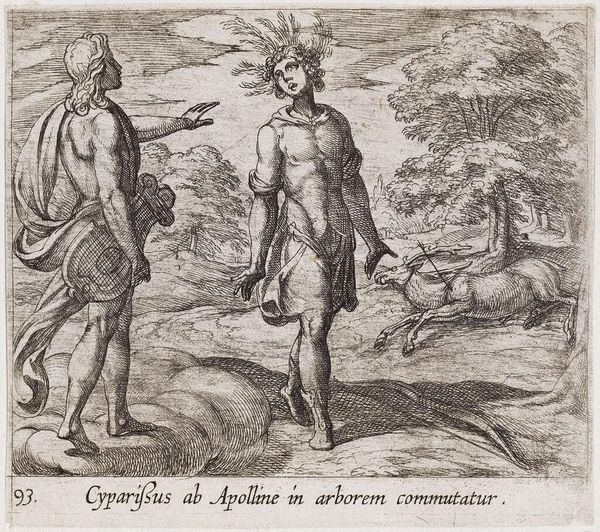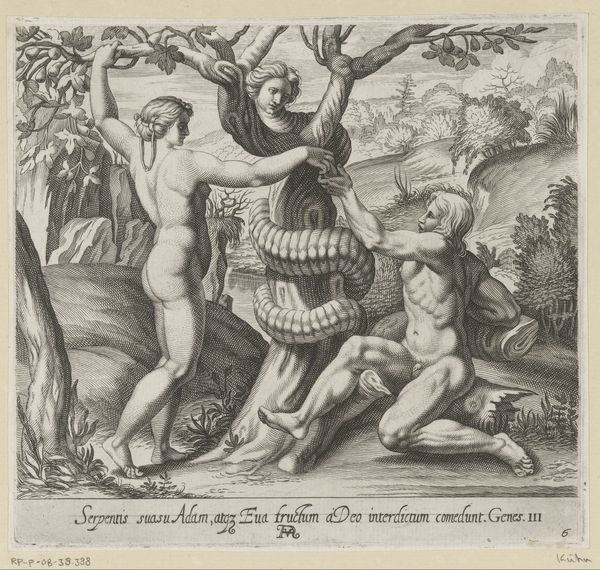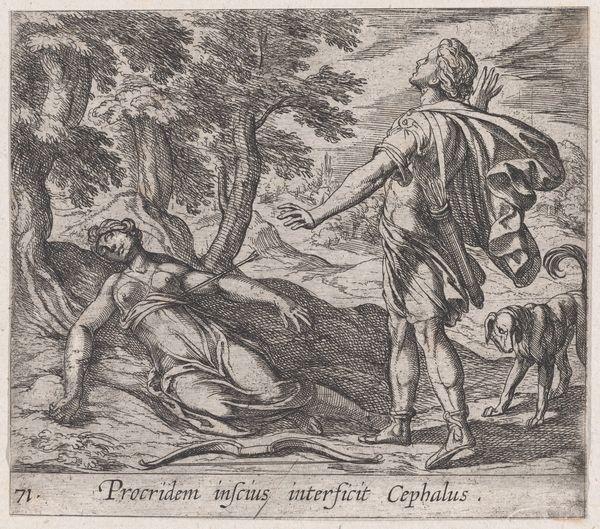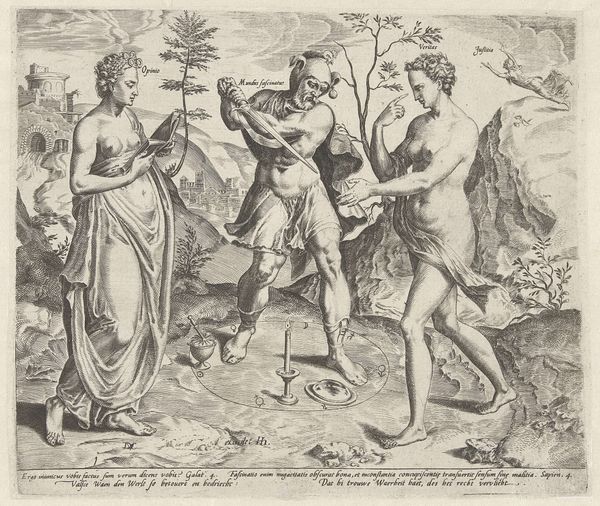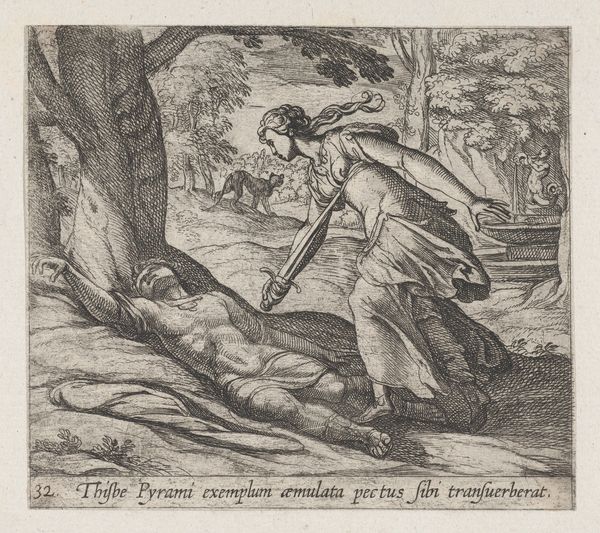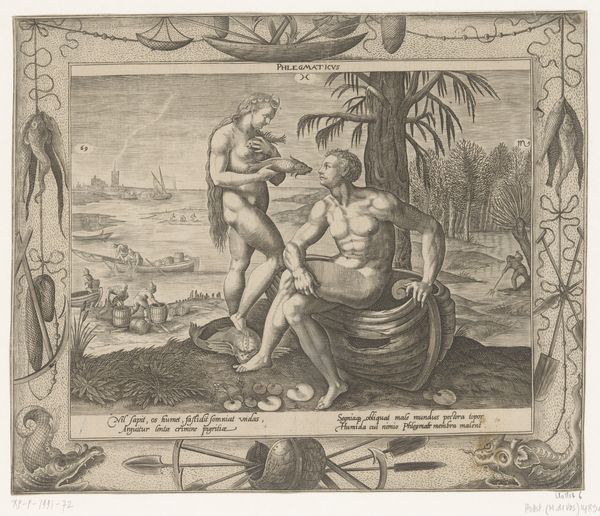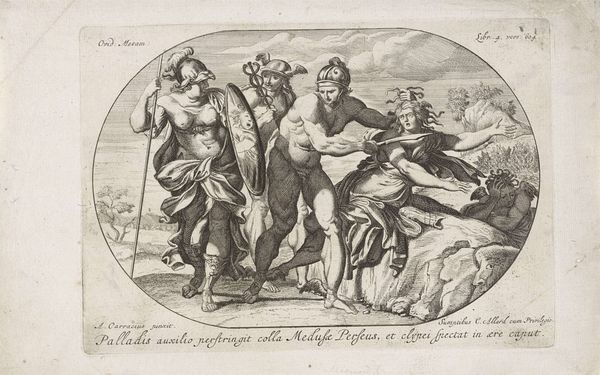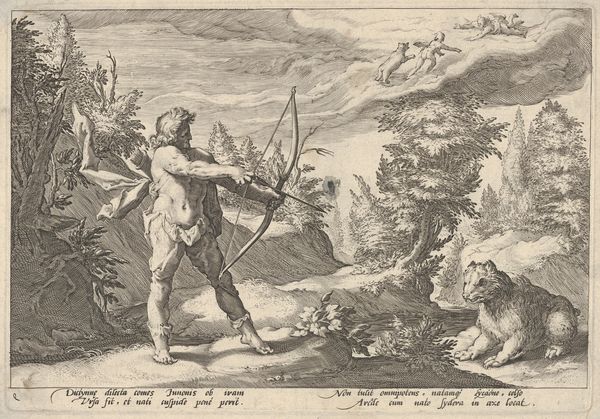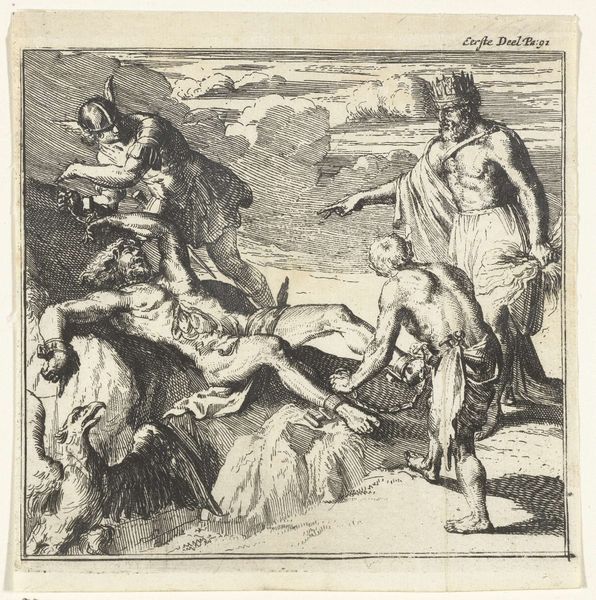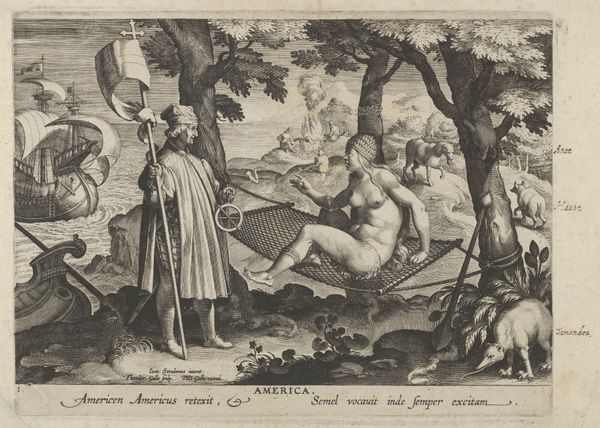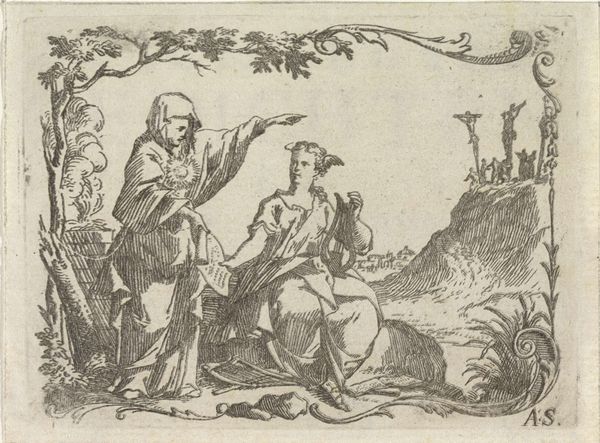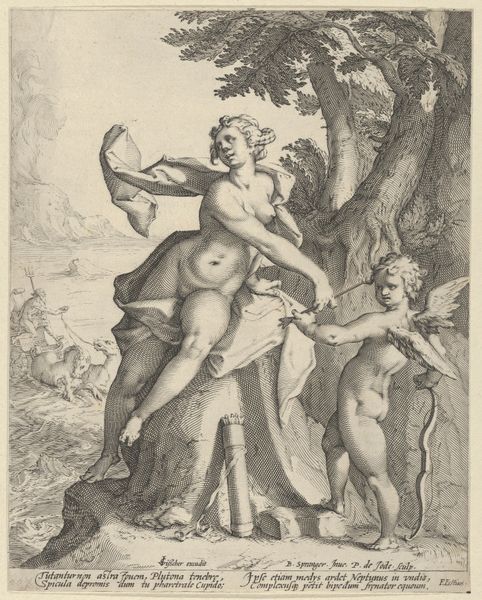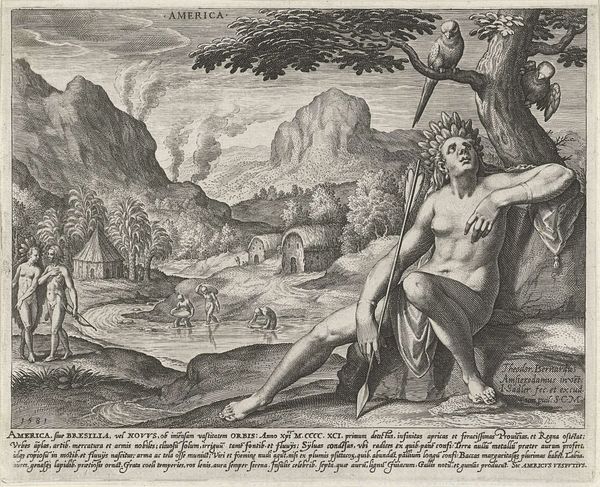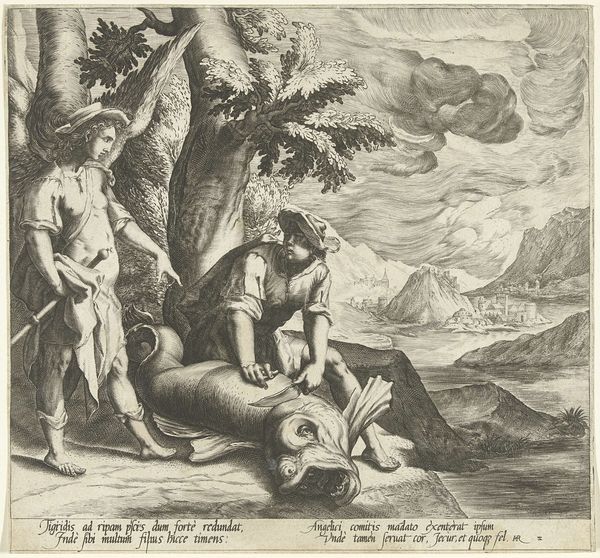
print, engraving
#
narrative-art
#
baroque
# print
#
landscape
#
figuration
#
mythology
#
line
#
history-painting
#
engraving
Dimensions: height 104 mm, width 118 mm
Copyright: Rijks Museum: Open Domain
Curator: The emotional tension in this image strikes me immediately. There’s a deep melancholy, despite the active figures. Editor: Indeed. We are looking at "Cyparissus in een cipres veranderd," or "Cyparissus Transformed into a Cypress Tree," an engraving by Antonio Tempesta, made sometime between 1606 and 1638. You can currently find this print residing here at the Rijksmuseum. Curator: It’s an interesting choice, visually depicting transformation. The original story is rife with complex symbolism—grief, regret, and Apollo’s fraught love. Do you see the weight of those elements? Editor: Absolutely. Tempesta’s choice of the cypress, associated with mourning and death, perfectly encapsulates Cyparissus's sorrow. See how the young man is already sprouting branches from his head, his gaze directed upwards, as if acknowledging the divine sorrow being forced upon him? Curator: And notice Apollo’s posture. He appears almost as if pleading, perhaps regretful. This makes me think about the politics of image-making at the time; how stories like these, laden with grief and transformation, are not merely entertaining tales, but mirrors reflecting on our own experiences. The social and political context of death was, of course, constantly in view in the early modern era. Editor: It reminds us that these stories lived in the visual and cultural imagination in ways we might not readily grasp today. It’s not merely a rendering of the story but an attempt to internalize its enduring symbols, connecting it to themes of grief, metamorphosis, and remembrance. Curator: Looking closer at the artistic choices, the intricate linework of the landscape and figures speaks volumes. This wasn’t merely a functional piece of printmaking, intended for broad distribution, but demonstrates the artist’s intent to create a sophisticated composition and appeal to art connoisseurs, reflecting changing tastes for high quality landscape scenes. Editor: Yes, though rendered as print, one cannot deny its baroque flair and inherent drama. Overall, I’d say the effectiveness lies in the way the symbolic weight is delivered, even down to the very distinct presence of Apollo. Curator: Considering Tempesta’s print, it encourages deeper engagement with themes and symbols resonant within its culture. Editor: And even today, the enduring visual motifs surrounding this tale certainly provide food for thought.
Comments
No comments
Be the first to comment and join the conversation on the ultimate creative platform.
